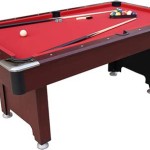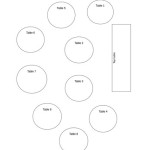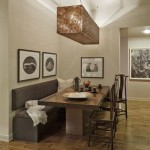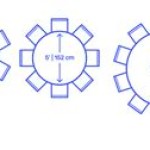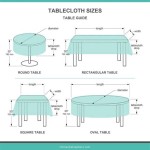Mid Century Oval Coffee Table: An Enduring Design Icon
The mid-century modern aesthetic, born from the post-World War II era, continues to captivate interior design enthusiasts. Characterized by clean lines, organic forms, and a focus on functionality, this style finds perhaps its most quintessential expression in furniture design. Among the many iconic pieces that define this period, the mid-century oval coffee table stands out as a particularly versatile and visually appealing element. Its enduring popularity stems from its ability to seamlessly blend form and function, injecting a sense of understated elegance and practicality into any living space.
Oval coffee tables, in general, provide a softer visual contrast to the angularity often found in modern furniture. Unlike rectangular or square tables, the rounded edges promote a sense of flow and openness within a room. This is especially beneficial in smaller spaces, where sharp corners can create a feeling of confinement. The absence of corners also enhances safety, making them a more child-friendly or pet-friendly option. However, it is the specific design considerations within the mid-century context that elevate the oval coffee table from a mere functional item to a design statement.
Key Characteristics of Mid-Century Modern Oval Coffee Tables
Mid-century modern oval coffee tables are typically defined by a distinct set of design features. These characteristics reflect the overarching principles of the mid-century modern movement, emphasizing natural materials, simple forms, and functional design.
One of the most prominent features is the use of natural materials, particularly wood. Teak, walnut, and oak were favored choices, valued for their rich grain patterns and warm tones. These woods were often finished with a clear coat or a light stain to showcase their natural beauty. The use of these materials connected the furniture to the natural world, aligning with the mid-century modern emphasis on bringing the outdoors in. The selection of wood wasn't just about aesthetics; it also reflected the durability and longevity that were valued in furniture design of that era.
The legs of mid-century oval coffee tables are another defining characteristic. Frequently, they feature a tapered design, sometimes angled outwards, lending the table a sense of lightness and airiness. These legs are often made of wood, matching the tabletop, but metal legs, particularly those made of brass or chrome, were also common, adding a touch of industrial chic. The leg design contributes significantly to the overall aesthetic, preventing the table from appearing heavy or bulky. The slight splay of the legs also provides stability and visual interest.
Lastly, the emphasis on minimalism is paramount. Ornamentation is kept to a minimum, with the focus placed on the purity of the form and the quality of the materials. Any embellishments are typically subtle, such as a simple beveled edge or a contrasting wood veneer. The goal is to create a piece that is both functional and visually pleasing, without unnecessary distractions. This minimalist approach ensures that the coffee table complements rather than overwhelms the surrounding décor.
The Versatility of the Oval Shape in Interior Design
The oval shape itself contributes significantly to the coffee table's versatility. Its rounded form offers several advantages in terms of spatial organization and visual appeal.
Firstly, the oval shape helps to soften the often-angular lines of a living room. Sofas, chairs, and other furniture pieces tend to have straight edges, and an oval coffee table provides a welcome contrast, creating a more harmonious and inviting atmosphere. The rounded edges also make it easier to navigate around the table, preventing accidental bumps and bruises. This is especially important in smaller living spaces, where maximizing usable space is crucial.
Secondly, the oval shape promotes conversation and interaction. Unlike rectangular tables, which can create a sense of separation between people sitting on opposite sides, an oval table encourages a more communal and inclusive arrangement. Everyone sitting around the table has a clear line of sight to one another, fostering a more engaging and collaborative environment. This makes it an ideal choice for social gatherings and family time.
Thirdly, the oval shape can visually elongate a room. When placed lengthwise, an oval coffee table can create the illusion of greater depth, making a small living room feel more spacious. This is particularly effective when paired with other elongated elements, such as a long sofa or a horizontal piece of artwork. The shape also allows for flexible placement, as it can be positioned either parallel to the sofa or at an angle, depending on the layout of the room.
Materials and Construction: Ensuring Longevity and Style
The materials and construction techniques used in mid-century modern oval coffee tables are crucial to their durability and aesthetic appeal. Understanding these aspects can help appreciate the craftsmanship and value of these enduring pieces.
As mentioned earlier, solid hardwoods such as teak, walnut, and oak are commonly used for the tabletop and legs. These woods are chosen for their strength, durability, and beautiful grain patterns. Solid wood construction ensures that the table can withstand daily use and last for generations. The wood is typically kiln-dried to prevent warping or cracking, and the finish is carefully applied to protect the surface from stains and scratches. The choice of wood not only impacts the table's longevity but also its overall aesthetic, influencing the warmth and character of the piece.
The joinery techniques used in constructing the legs are also important. Mortise and tenon joints, dovetail joints, and dowel joints are all common methods used to securely attach the legs to the tabletop. These joints are known for their strength and durability, ensuring that the legs remain stable and secure over time. The craftsmanship involved in creating these joints is a testament to the quality of mid-century modern furniture. The focus on sound construction techniques ensures that the table can withstand the test of time.
In some cases, veneers are used to create the appearance of solid wood. High-quality veneers, when properly applied, can be just as durable as solid wood and offer a more cost-effective option. However, it's important to ensure that the veneer is thick enough to withstand wear and tear and that the edges are properly sealed to prevent peeling. The use of veneers allows for more intricate designs and the use of rare or exotic woods without the cost of using solid wood throughout the entire piece. Regardless of whether solid wood or veneer is used, the quality of the materials and the construction techniques are paramount in determining the overall longevity and style of the coffee table.
The mid-century oval coffee table remains a sought-after piece of furniture due to its timeless design, versatility, and enduring appeal. Its combination of clean lines, natural materials, and functional form makes it a perfect complement to any modern living space, contributing both style and practical utility.

Oval Ellipse Coffee Table Walnut Wooden Large Mid Century Modern Scandinavian Triangle Round Rectangle

Mid Century Modern Oval Coffee Table With Slatted Shelf Tusk And Tail Design

Monterey Oval Mid Century Modern Wood Coffee Table Chestnut Alaterre Furniture Target

Danish Modern Mid Century Coffee Table Oval Biomorphic Tables

Mid Century Modern Oval Coffee Table Round Wood

Mid Century Modern Oval Coffee Table With Slatted Shelf

51 Oval Coffee Tables For Curvaceous Sofa Side Appeal

Southern Enterprises Mid Century Wooden Oval Coffee Table Dark Sienna Com

Mid Century Modern Shagreen Oval Coffee Table In Walnut Gray Gold With Storage Homary

Rare Midcentury Oval Glass Coffee Table At 1stdibs Mid Century

